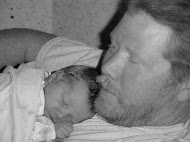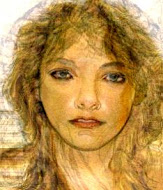This is an excerpt from The Element Encyclopedia of Witchcraft
Mysteries of Corn
Classic Halloween Cards are packed with evocative images of witchcraft. They have to be; the artists were given a very small frame in which to work their magic and so these little cards are studded with images that are the visual equivalent of short-hand, intended to evoke the haunting ambience of Halloween. These images are the iconography of Halloween. Most are familiar and predictable: witches, of course, but also black cats, bats, spiders' webs, cauldrons, and corn. Witches are depicted engaged in a variety of activities including flying on broomsticks, stirring cauldrons, scaring children, performing divination, reading grimoires, and sitting in cornfields.
Bats, broomsticks, black cats, OK' but what's the witchcraft connection with cornfields ?
The standard modern explanation for the corn connection is that in North America, Halloween corresponds with the corn harvest (pumpkin harvest, too) and so these vegetables have become coincidentally associated with the holiday. This is a superficial explanation however: the connection of corn and witchcraft has deep roots and is hardly limited to North America.
The first mystery of corn may be determining exactly what is under discussion. The word "corn" sometimes causes confusion, In the United States, the only corn is maize corn, sacred to Native Americans, the corn first encountered by Europeans in America. That colonists were previously unaware of maize is drummed into the heads of American school children, who are then confused to learn that Demeter is the ancient Greek "Corn Goddess." With no knowledge of corn, how could it have a goddess? In the rest of the world, "corn" indicates grain of any sort. Thus Corn Mother really means Grain Mother and frequently really Rye Mother,
In mainstream modern Western culture, animals and humans are commonly acknowledged as living while plant, although theoretically acknowledged as "alive," are often little more then inanimate objects. Most people do not believe that plants have consciousness and emotions, can communicate or that they suffer when picked or harvested.
There is no way to understand the mysteries of agricultural magic and the Corn Mother without accepting that plants are living beings possessing souls and spiritual protection, similar to animals and humans, even if they're not mobile, even if they're not alive in the exact same manner that humans and animals live.
The notion of the Corn Mother is predicated on the belief that plants are killed when harvested in the same manner that animals (or people) are slaughtered, even if there is no blood, even if the plants show no fear or resistance.
Earth's earliest peoples were foragers and hunter-gatherers: they lived solely from what Earth gave them. Earth was the mother who provided - when she didn't, one performed rituals of appeasement to coax more bounty from her and/or one moved nomadically until sustenance was found.
The concept of agriculture, of setting down roots in one spot, of working the land, planting, determining crops and harvesting them - taking what you planted rather than simply accepting what the Earth Mother gave you - was a radical human development, a revolution that caused shifts in spiritual and mental perceptions and even in the human body, The first permanent blood-type mutation (Type A) occurs at this time, apparently in response to this agricultural and dietary revolution.
This agricultural revolution did more than permit people to settle in one place: it stimulated a new way of understanding Earth, and new fears and rituals so deeply imbedded they still permeate our culture even if we no longer understand or completely recognize them.
Previously people avoided digging too deeply in Earth: similar to mining, rooting around in Earth's female body was uncomfortably close to rape. In the beginning, people were still asking permission, In the beginning, prior to the invention of the plough, agriculture was considered to be part of women's mysteries.
Planting and harvesting were accompanied by elaborate rituals requesting permission and of appeasement and self-protection. Priestesses communed with Earth so as to work together with her to reap a satisfactory, blessed harvest.
Among the forms of the early Neolithic Earth goddess is the sow. Pigs are associated with women's agriculture prior to the invention of the plough. It's believed that observing the rooting of pigs led to the first sowing and reaping. The pig remains the alter ego of the Corn Mother.
The Earth Mother is the metaphorical mother of people but she is the actual mother of plants. Seeds are placed within her womb to grow, They emerge alive and would theoretically remain alive for their natural lifespan if left unharvested.
In order for the Earth Mother's human children to survive, however, they must sacrifice what are effectively their own siblings, the plants, Furthermore, this must be accomplished without angering the Earth Mother so much that she withholds next year's harvest.
Grain, the crop that stimulated the agricultural revolution, is harvested in autumn, often in late October, corresponding to what is now Samhain / Halloween. Corn, sacrificed so that people can live, was traditionally cut with a scythe or sickle, harvest tools still associated with the Grim Reaper.
A complex system of agricultural magic developed, some involving the entire community others exclusively women's mysteries. Among the most prevalent components of traditional agricultural magic are:
- Offerings of menstrual blood
.
- Ritual sex in the fields,
- Ritual dancing involving leaping (flying) to encourage the plants to grow
- Ritual dancing involving broomsticks (women) and pitchforks (men)
- Shamanic battles to protect the harvest
Many of these traditions, often long divorced from their agricultural origins, remain significant components of witchcraft, its traditions, and myths.
Sacrifices were offered to the Earth Mother as reciprocal gestures: she was expected to sacrifice her botanical children. Every harvest thus is a sacrifice. As agriculture changed from an exclusively female art the nature of reciprocal sacrifices changed too - menstrual blood, once so holy and powerful that it was secret and not publicly discussed, transformed into something rarely discussed because it was perceived as shameful and dangerous. If menstrual blood is the preferred offering, however, agricultural power is squarely in the hands of women.
Moving away form menstrual offerings also changes the mature of the sacrifice menstrual blood was once understood as potential children, (Lack of menstruation during pregnancy was interpreted as menstrual blood being used to form the child's body.)
Women's potential children were given as offerings of thanks and appeasement for the harvest, Menstrual blood is the only blood that can be offered without injury or death: substitutes inevitably involved animal or human sacrifice - someone's real child was offered as gratitude and appeasement.
Earth, like a woman, was understood to have her own menstrual blood: iron ore. Ironworking placed the equivalent of menstrual power in men's hands. The creation of iron agricultural tools changed the power structure of agriculture: it became heavy labor, suited to men's physical strength. Iron knives also changed the mature of sacrifice - different types of blood sacrifice became available, yet still, because of iron, tangentially related to menstruation.
Tension between men and women, anxiety about where power lies, would also lead to fears of malevolent witchcraft. If women have the power to stimulate growth, then presumably they have the power to stunt it as well. Among the primary accusations of malevolent witchcraft throughout history is causing blight and harming the harvest.
*****For further information on this subject and all things witchy, you should consider investing in this book - one of my "go to" books that gets "gone to" quite frequently!
Disclaimer: No one involved in this blog or its contents may be held responsible for any adverse reactions arising from following any of the instructions/recipes on this list. It is the reader's personal responsibility to exercise all precautions and use his or her own discretion if following any instructions or advice from this blog.















No comments:
Post a Comment